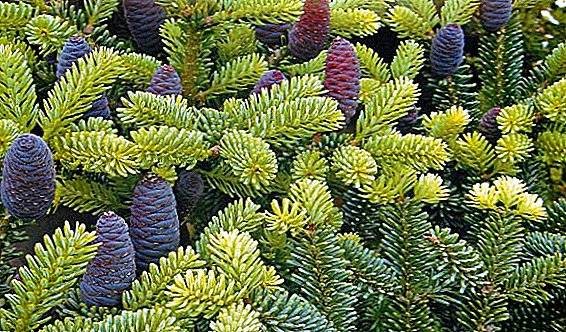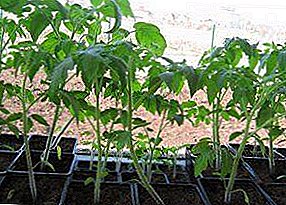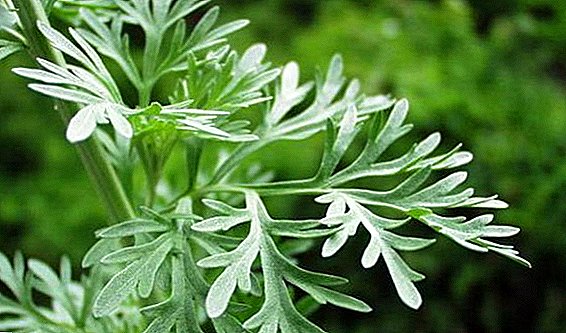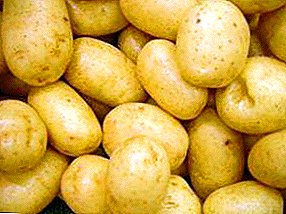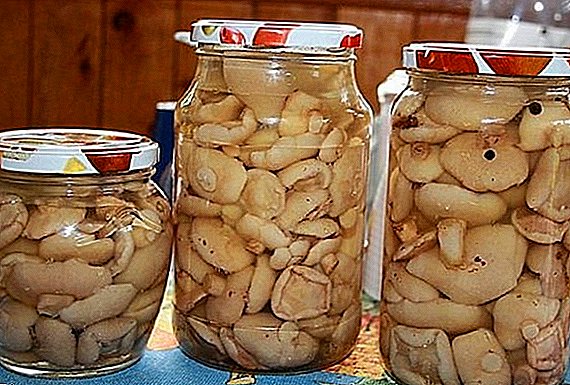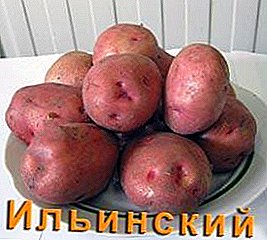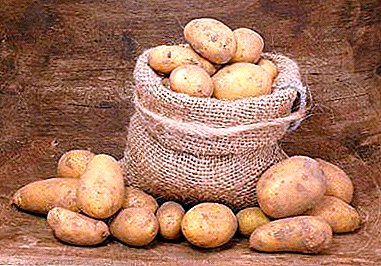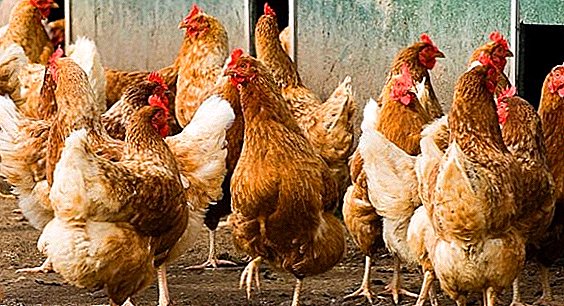 The category of hens, which differs from its relatives by its high meat taste and excellent appearance, is the Kuban Red breed. It is possible to grow such birds not only in the conditions of an industrial farm, but also in a household. The high level of productivity of this breed, good survival of the young, as well as savings in feeding could not go unnoticed. In order to grow the Kuban red breed of chickens could not only experienced poultry farmers, but also newcomers in this field, we offer a detailed description of this category of poultry.
The category of hens, which differs from its relatives by its high meat taste and excellent appearance, is the Kuban Red breed. It is possible to grow such birds not only in the conditions of an industrial farm, but also in a household. The high level of productivity of this breed, good survival of the young, as well as savings in feeding could not go unnoticed. In order to grow the Kuban red breed of chickens could not only experienced poultry farmers, but also newcomers in this field, we offer a detailed description of this category of poultry.
Characteristic and distinctive features
The official name of this breed of chickens is "UK Kuban-7". But, naturally, it would be inconvenient for a farmer to call his poultry that way, so these layers received the second name - Kuban reds. This category of birds is the result of a long and painstaking selection and is becoming increasingly popular every day.
Check out the most common breeds of chickens: "Hubbard (Isa F-15)", "Amrox", "Maran", "Master Gray", "Dominant", "Redbro", "Viandot", "Faverol", "Adler silver" , "Rhode Island", "Poltava", "Minorca", "Andalusian", "Russian White" ("Snow White"), "Orpington", "Kuchinsky Jubilee", "Leggorn", "Cohinhin", "Brahma", "Zagorsky salmon", "Loman Brown", "Sussex", "Hisex Brown" and Hisex White ".
History of origin
The ancestors of the Kuban red layer are the Rhode Island and Leggorn breeds. Both species of birds were characterized by excellent productivity, which had a positive effect on the fruit of their crossing. The first bird of the Kuban Red appeared in the Krasnodar Territory at the Labinsk Plant in 1995. This is the southern region of Russia, Kuban. Hence the name of this breed of chickens. 
Important! Breed up to this day. The company is actively working to improve the quality characteristics of a motley beauty.
External differences
The bird has a rather large size, while the head is small and has dense plumage. Feathers are either red or light brown. There is also a leaf-shaped comb, rich red color and large size. The tail and wings of chickens may be slightly greyish.
The structure of the skeleton is fully consistent with the standard structure of any layer. It is light and compact. Paws are medium in size but quite powerful. One chicken can weigh about 2 kg. Roosters are usually slightly larger and grow up to 3 kg in weight. 
It is only possible to distinguish cocks from chickens when they reach the age of 1 month. The birds are very calm, viable and somewhat phlegmatic. Well tolerated changing conditions, content and place of walking.
Productive qualities
Chickens Kuban red are bright representatives of the egg productive type. If you provide them with good conditions and proper care, then each chicken is able to give up to 320-340 eggs with good weight. The duration of egg production is quite long and starts from 4 months of age.
The meat of these poultry is very tasty, juicy and has a delicate texture. It can rightly be considered dietary. It should be noted that this breed of chickens is not a broiler, that is, it is grown primarily for the production of eggs, and not meat blanks. Did you know? Famous expression "chicken brains" is extremely unjustified. According to the statements of researchers, the chicken already in the first hours of existence can count and exceeds the level of development of a one-year-old human baby. An adult chicken is able to memorize over 100 different faces, and also to distinguish its owner from strangers from a distance of more than 10 meters.

Rules for buying young stock
It is very important to learn how to choose chicks for purchase. You can acquire young stock at poultry farms, in specialized hatcheries, as well as from private traders.
- It is said that rejected individuals can go on sale at poultry farms, and therefore prices there are usually understated. But it is also worth noting that in such enterprises there is always veterinary control, which will relieve the buyer from the risk of acquiring sick birds.
- As for private sellers, they usually offer small batches of birds, most often in the markets. Here it is difficult to determine the breed and sometimes you can run into scammers. But if the seller is proven and honest, then chickens from under the hen will most likely be healthy and as strong as possible.
- Specialized hatcheries usually offer for sale wholesale batches of chickens. Order must be made in advance. Perhaps this method of purchase will not be convenient for everyone, but with this option you can be confident in the quality characteristics of the young, as such an enterprise will always work on its reputation.

The age of young stock that is offered for sale usually ranges from 1 to 10 days. Respectively, the older the chickens, the more expensive they are. But at the same time, the older the chicken, the more likely it is that it will survive and develop well. A good percentage of the survival of young animals is the death of 2-4 individuals (not more than) of 50 pieces. But it is recommended to carefully select healthy and strong birds in order to improve such statistics.
The chicken should be clean, its fluff should be beautiful and smooth. You should also pay attention to the area around the cloaca, it should be clean and without inflammation. A healthy and hardy individual is a chicken that stands upright and moves boldly. Eyes should be fully open and slightly shine. Wings should be tightly pressed to the body, and not sag down. There should be no bleeding on the umbilical cord. The tummy should be soft and not puffed up. Young animals should be carefully inspected for abnormalities and external defects.
Healthy individuals are always active and mobile. Their voice is ringing, without wheeze. It is very simple to check the activity of pets - you need to knock lightly on the box where they are located and evaluate their behavioral changes. Also, young animals must respond to food, eat with appetite.
Important! Before choosing chickens for purchase, it is necessary to check their age with the seller. After all, those individuals who hatched less than 7 hours ago, physically can not be active and mobile. This stage will come later.

Conditions of detention
The hens of the Kuban Red breed are distinguished by their resistance to stress, as well as the strength of the immune system. But at the same time, in order to maintain a good state of their health, it is necessary to keep them in conditions that will meet the general standards for such a breed.
- It is desirable that the hen house was the lowest possible level of humidity.
- Need room air regularly or equip it with a ventilation system. It is also possible to provide the house with a small window leaf, but at the same time it is absolutely important to prevent the formation of drafts.
- Drinkers and perches for these chickens you need to be placed at a height of about 1 meter.
- Also birds should have free walk access in open space in spring and especially summer. This will increase their productivity. It should be noted that such a criterion is not extremely obligatory, because in industrial poultry farms chicken are kept exclusively in cage conditions. But if there is an opportunity, then it is still worthwhile to provide your pets with the opportunity to walk.
- Temperature level in the house is also very important. In winter, the temperature indicator in the chicken coop should not fall below -2 ° C, otherwise chickens will freeze scallops, will actively eat food, and, as a result, will no longer carry eggs. In the summer, too, do not forget about air control in the house. It is impossible to allow the thermometer to rise to a level higher than 27 ° C, otherwise the appetite will be lost in the hens and they will lay eggs with a thin shell, or without it at all. The optimum temperature for this breed of chickens is 17-19 ° C.

Did you know? The worst and most difficult work in the poultry industry is manual fishing of chickens. Such activity provokes carpal tunnel syndrome, as well as severe pain in the back and lower back. Due to the fact that over time it was increasingly difficult to hire and, most importantly, retain such employees, a mechanical collector of chickens was invented. In appearance, it looks like a certain combine and looks very terrifying in the process. He, thanks to the special blades, "absorbs" birds one after another. But in fact, as practice has shown, chickens collected by a mechanical method are injured much less often and in smaller quantities than those that were collected manually.
Feeding ration
The fruitfulness of the Kuban Red breed chickens also depends on how well their food is organized. So picking up food for these birds, you need to be very responsible and attentive.  About half of the total food should be crushed grains. This includes barley, wheat and rye. Dry food should be given to birds twice a day. As a protein supplement can act lupine and legumes. If there are wet mashes in the diet of the hens, then you need to count them in such a way that the birds can consume such food in 30 minutes. Otherwise, wet food will dry out and lose the predominant amount of vitamins and minerals. In winter, these mash is recommended to cook on whey or broth. Also during the cold season meals can be divided into three meals.
About half of the total food should be crushed grains. This includes barley, wheat and rye. Dry food should be given to birds twice a day. As a protein supplement can act lupine and legumes. If there are wet mashes in the diet of the hens, then you need to count them in such a way that the birds can consume such food in 30 minutes. Otherwise, wet food will dry out and lose the predominant amount of vitamins and minerals. In winter, these mash is recommended to cook on whey or broth. Also during the cold season meals can be divided into three meals.
If you want your chickens to quickly gain their weight and rush well, find out how, and how much, how to feed domestic chickens.
Important! During puberty of poultry it is very important to provide it with a sufficient amount of calcium. If this is not done, the chickens will peck at their own eggs, and with time, even when the calcium deficiency is replenished, these actions will become a habit.
Vaccination, care and cleaning of the chicken coop
In order for domestic chickens to give a large number of eggs, as well as not to undergo diseases, you need to properly form them. diet, and provide appropriate conditions of detention.
From time to time you can vaccinate young birds from infectious bronchitis, bursitis, salmonella, mycoplasmosis and other diseases. The first vaccination should be carried out on the day the chick is born. It will help ensure the chick is defeated by Marek's disease. The next day, you need to vaccinate young salmonella. On the sixth or seventh day, it is recommended to introduce a vaccine against coccidiosis. At the end of the third week of life of the young, a medicine is injected that will protect chickens from infectious bursitis. The same vaccination is repeated again after a week. Thanks to these and other vaccinations, it is possible to protect domestic birds from the most common diseases.
It is equally important to conduct time and quality cleaning hen house It is especially important to do this in the winter when the birds are in the house all the time, without leaving for walking. From time to time, it is necessary to wash the drinkers and bird feeders; you should also regularly remove straw from the floor, since parasitic specimens can develop in it. Aviaries should also be cleaned, where birds spend a lot of time in the spring and summer periods. The poles on which the chickens sleep should also be kept clean. 
It is also important not to forget about high-quality ventilation of the room. Of particular importance is this factor in the hot seasons of the year, because the heat is very detrimental to domestic chickens.
It should be remembered that the young at first has a very weak immune system, so the first time it is recommended to keep it separate from adult chickens. To prevent the development of pathological organisms in the plumage of young individuals, a significant amount of ash should be placed in the hen house or in the walking area, where birds can swarm, thereby clearing their plumage.
As can be seen, the cultivation of layers of the Kuban Red breed is a very interesting and exciting activity. If birds are properly cared for, they will be able to respond. fairly high level of productivity. The main thing - do not forget to care for the chicken coop, as well as monitor the diet of these poultry.


